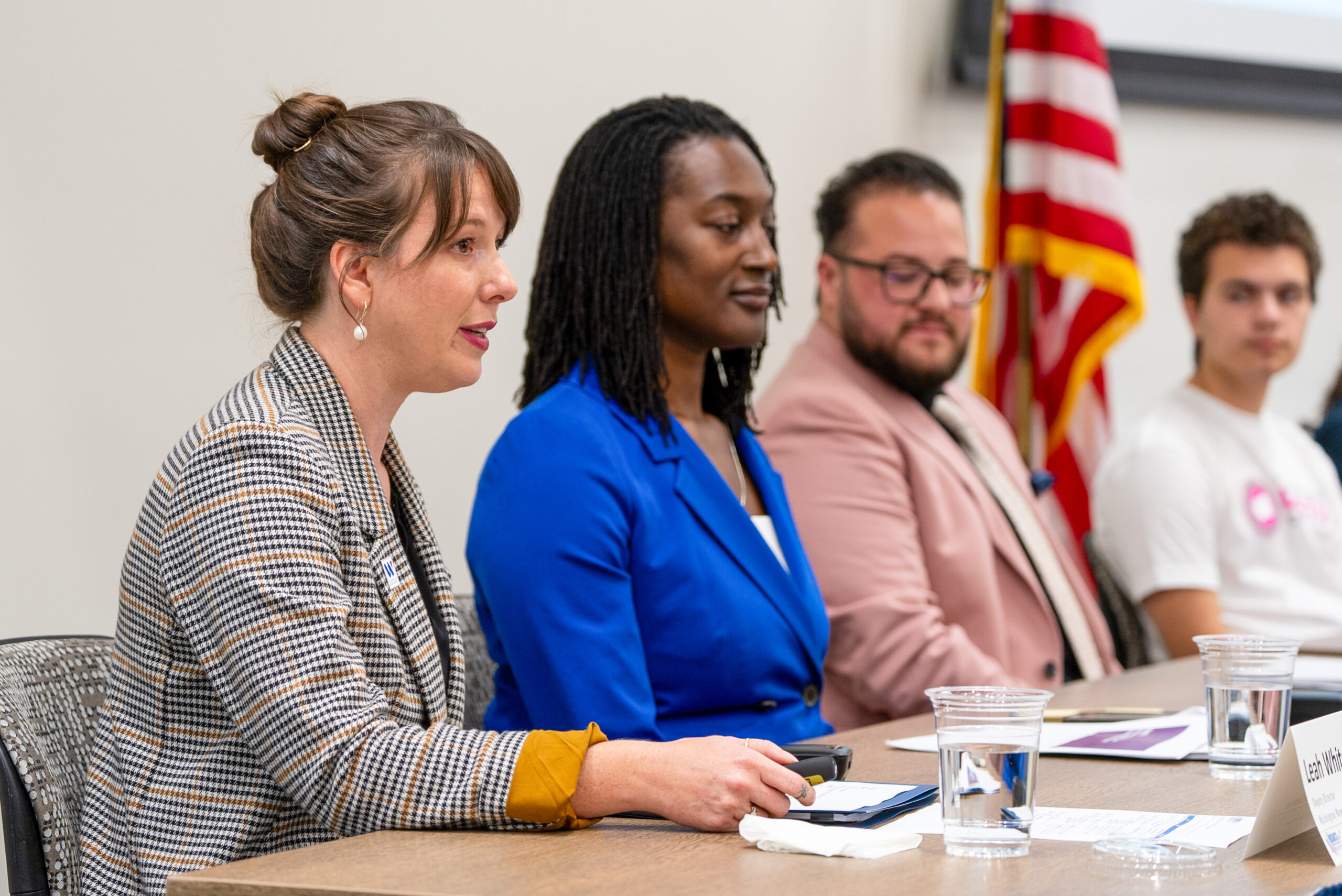What Dobbs v. Jackson Women’s Health Organization Means for Washington State
January 25, 2022
In December 2021, the Supreme Court ruled to leave Texas’ Senate Bill 8 in place, a law which banned most abortions in the state. Oral arguments also indicated that a majority of the Supreme Court justices would rule in favor of upholding a Mississippi law – via Dobbs v. Jackson Women’s Health Organization – that bans abortions after 15 weeks of pregnancy. A ruling by the Court is due sometime this year.
Based on the testimony of the justices thus far, reproductive rights proponents fear that the federal protections for abortion access established by Roe v. Wade (1973) and Planned Parenthood v. Casey (1992) are in imminent danger of being overturned. Now, as the Supreme Court deliberates the ruling on Dobbs – and by extension whether to preserve or revoke the protections codified in Roe and Casey – individual states must consider the implications of such a ruling on state-level protections for reproductive rights.
In Washington State, abortion access will most likely remain in place regardless of the U.S. Supreme Court’s ruling, due to protections codified in state law since 1991. State Representative Eileen Cody of West Seattle, who chairs the House Health Care & Wellness Committee, told Crosscut that the introduction of any new restrictions on abortion in state legislature is unlikely.
However, she warned that a reversal of federal protections for abortion rights would “most likely create a ‘patchwork’ of abortion laws that vary from state to state,” and that the criminalization of abortion care in other states would likely drive an influx of abortion-seekers to Washington to seek legal, safe, and timely care. Such an influx could place strain on Washington’s care system and increase wait times for patients across the board.
The Importance of Abortion Access to the Well-being of Women
Contrary to the state of Mississippi’s argument, in which they claimed that “there is simply no causal link between the availability of abortion and the capacity of women to act in society,” research in the field of economics demonstrates that in fact, abortion access has a profound impact on the social and economic livelihoods and trajectories of women.
The landmark Turnaway Study, Advancing New Standards in Reproductive Health – a research group operating from the University of California San Francisco – conducted a longitudinal study that tracked the patients of 30 abortion clinics across 21 states from 2008 to 2015. The study compared the health, wellness, and socioeconomic outcomes for women who were able to obtain an abortion against those who are denied an abortion, and found that women who were denied abortion care were three times more likely to fall below the poverty line two years later, with credit scores likely to be lower, debt likely to be higher, and higher risk of negative public financial records such as bankruptcies and evictions.
The body of research on abortion access largely concurs that the legalization of abortion access leads to increases in women’s educational attainment, workforce participation, and their ability to advance in leadership and earnings – all of which improve educational and economic outcomes for their children, as well.
According to the Institute for Women’s Policy Research, “Access to abortion not only allows women to better control their fertility, but importantly, it also changes their expectations about childbearing and their control over it. As a result, women may invest more heavily in their own human capital, leading to increased schooling and improved labor market outcomes; this is true even for women who never have an unintended pregnancy. These benefits may extend beyond the cohorts of women who initially gained access to abortion, to subsequent generations of women and men.”
The Turnaway Study also found that women who were denied an abortion and carried their pregnancy to term faced higher risk and more associated health problems than those who received a voluntary abortion.
Despite research suggesting that over 60% of maternal mortality is preventable, the rate of maternal mortality and morbidity in the U.S. has been growing. Since 1987, when the CDC began collecting data on pregnancy-related mortality, the number of reported pregnancy-related deaths has steadily increased from 7.2 deaths per 100,000 live births in 1987 to 17.3 deaths per 100,000 live births in 2017. In a 2020 report from the Commonwealth Fund, the United States ranked highest in maternal mortality rates relative to ten other high-income nations, with rates approximately double that of most other high-income nations.
Those maternal death rates are higher in states with more restrictions on abortion access.
When disaggregated, the data also reveals stark racial disparities in rates of pregnancy-related death and rates of unintended pregnancies, both symptoms of underlying structural inequities in wealth, education (including sexual health education), health care and access to family planning, and discrimination that has led to mistrust of the health care system. Black and Indigenous pregnant people are two to three times more likely to die from pregnancy-related causes than white pregnant people, while also being less likely to have access to quality family planning and contraceptives due to a host of systemic barriers – making abortion access crucial in providing women the choice to manage and mitigate risks to their health. Research has indicated that the positive outcomes in economic security and opportunity associated with the legalization of abortion were particularly magnified for Black women.
Melanie Mazza writes for the Economic Opportunity Institute that protecting reproductive health is fundamental to both public health and economic justice: “Reproductive rights are tied to everything. Economic security, health care, race, gender, and human rights… Reproductive justice connects reproductive health to all of the other components of a safe, healthy, autonomous life.”
Abortion access is a critical part of reproductive justice because it allows individuals to exercise their right to make decisions about their body, health outcomes, and economic security. This includes deciding if and when one wants to raise a family, and whether or not to birth children into safe and sustainable environments. In essence, reproductive justice is critical to the holistic well-being of women and is key to ensuring that women have the opportunity to thrive.
History of Reproductive Rights & Abortion Care in Washington State
Washington State’s reproductive rights protections are the legacy of Washington’s history of strong reproductive rights advocacy, which led to Washington voters passing a series of measures over the past 50 years establishing and expanding the right to abortion care.
Prior to 1970, abortion was illegal in Washington state. But in 1970, after three years of campaigning by abortion care advocates, Washington voters passed Referendum 20, which established a limited but foundational right for women to seek abortion. In 1973, the referendum was superseded by Roe.
In 1991, in response to backlash against Roe and in anticipation of attempts to overhaul its protections, Washington’s abortion rights advocates once again mobilized to usher in Initiative 120, also known as the Reproductive Privacy Act. The law legalized abortion at the state level, and included an economic equality provision dedicating state Medicaid funds to cover the procedure. (In Washington State, pregnant women and children with undocumented status are eligible for Apple Health coverage that pays for most health care services, including abortion.) Advocates of 120 saw its passage as a precaution in the case that federal protections might be overturned, as the Supreme Court seems poised to do at present.
Washington continued to protect reproductive rights with the passage of the Reproductive Parity Act in 2018, which required insurers that cover maternity care to also cover abortion care. The following year, Governor Inslee also signed the Reproductive Health Access for All Act, which fortified protections to reproductive healthcare access for Washington’s transgender and gender-nonconforming communities.
With ongoing efforts to preserve and expand reproductive rights and access to reproductive care, Washington remains a leader in protecting reproductive rights in the United States, and a sanctuary for those seeking to exercise those rights.
Bridging the Gaps
So if Washington is already a leader in reproductive rights, then how do we move forward?
Despite the state’s many protections, many Washington residents still do not have meaningful access to abortion and reproductive health.
The leading barriers to abortion access in Washington are (1) denials of care; (2) the high cost that makes abortion unaffordable for many people, despite the fact that most people who seek abortion are already struggling financially and that the most commonly cited reasons for seeking an abortion are financial concerns; and (3) structural racism and bias within healthcare systems that can make it difficult or unsafe to seek care, and the limited availability of facilities and providers across the state. In 2017, 59% of counties in Washington state had no clinics that provided abortions, and 10% of women in Washington lived in those counties.
Meanwhile, the fight continues to defend and expand protections for and access to reproductive health care in and beyond Washington State. Barriers to access are worse for communities that have been historically excluded, including Black, Indigenous, and people of color; those who are still ineligible for health coverage or under-insured; immigrant communities; incarcerated individuals; those with disabilities; people with lower income; those who live in rural communities; and for all people who are able to get pregnant, regardless of gender and sexual identity.
And abortion access still often remains financially inaccessible. Despite the fact that most women who seek abortion are already struggling financially, abortion is often cost-prohibitive and financially inaccessible. With costs ranging from $300 to upwards of $12,000, the price of the procedure climbs the further along one is in their pregnancy.
For individuals who do not have insurance coverage or funds readily available to cover medical procedures out-of-pocket, some must wait longer to save for a procedure. While obtaining an abortion is overall lower risk compared to continuing a pregnancy to term, abortions at later gestational ages are associated with greater risk than those performed earlier in a pregnancy, and states often have viability standards that prevent women from getting an abortion after a certain gestational age. Thus, there is often no other option than to carry to term.
The Path Forward
While Washington has been a leader in protecting reproductive justice in the past 50 years, the recent attacks on abortion rights – in addition to voting rights, immigrant rights, and LGBTQ+ rights – across the nation have demonstrated that these hard-won gains by generations of advocates and movements are not guarantees. As long as systems still by default center male perspectives, and as long as deeply entrenched patriarchy is not fully dismantled, women and non-male-gendered people must continue to fight for and defend our rights.
Though Washington State is led and governed by strong advocates for gender equity and gender justice, we must not be complacent. Instead, the Women’s Commission – alongside a coalition of dedicated leaders and organizations – remains vigilant, driving conversations and legislation forward so that protections are made to be more inclusive, more equitable, more affirming, and more expansive.
Learn More
To learn more about your rights, and where you can find access to and coverage for reproductive health and abortion care in Washington state, please visit:
- Washington State Department of Health: Increasing Access to Reproductive Choice
- Washington State Department of Health: Abortion
- Washington State Department of Health: Sexual and Reproductive Health
- Washington State Department of Health: State Laws Related to Sexual and Reproductive Health
- Washington State Office of the Insurance Commissioner: Reproductive Health Benefits
- Washington State Healthcare Authority: Reproductive Health
- Legal Voice: Abortion Rights in Washington State
- Northwest Abortion Access Fund: Find a Clinic
For more information about reproductive justice providers and the movement both in Washington State and nation-wide, please visit:
- Cedar River Clinics
- Planned Parenthood
- Northwest Abortion Access Fund
- Upstream Washington
- NARAL Pro-Choice: Washington
- Pro-Choice Washington
- Reproductive Justice page of the Washington State Coalition Against Domestic Violence (WSCADV)
- Reproductive Health Access Network: Washington
- Center for Reproductive Rights
- SisterSong, a Women of Color Reproductive Justice Collective
- Surge Reproductive Justice
To follow recent efforts in Washington State’s 2022 Legislative Session that seeks to expand and fortify protections for abortion care access and reproductive rights, please read more about:
- HB 1851, Preserving a pregnant individual’s ability to access abortion care



